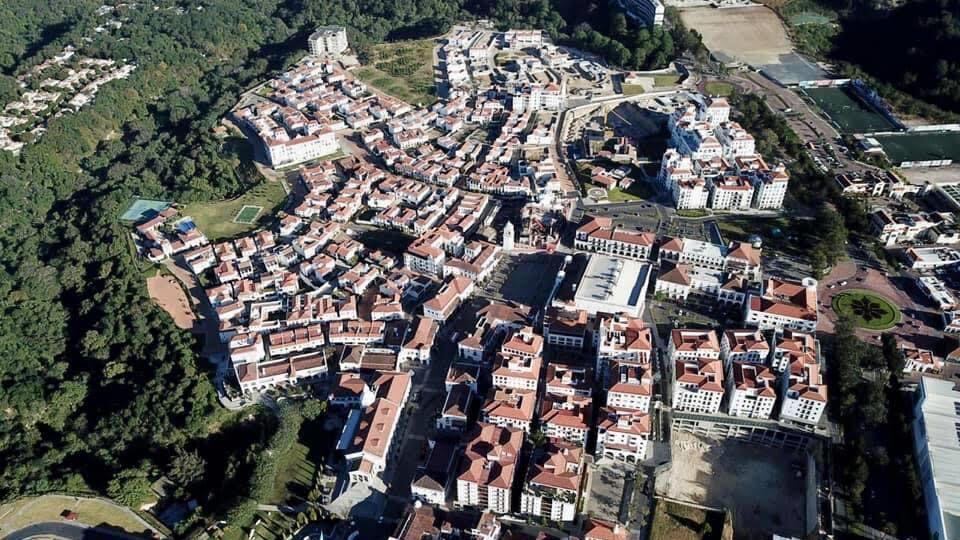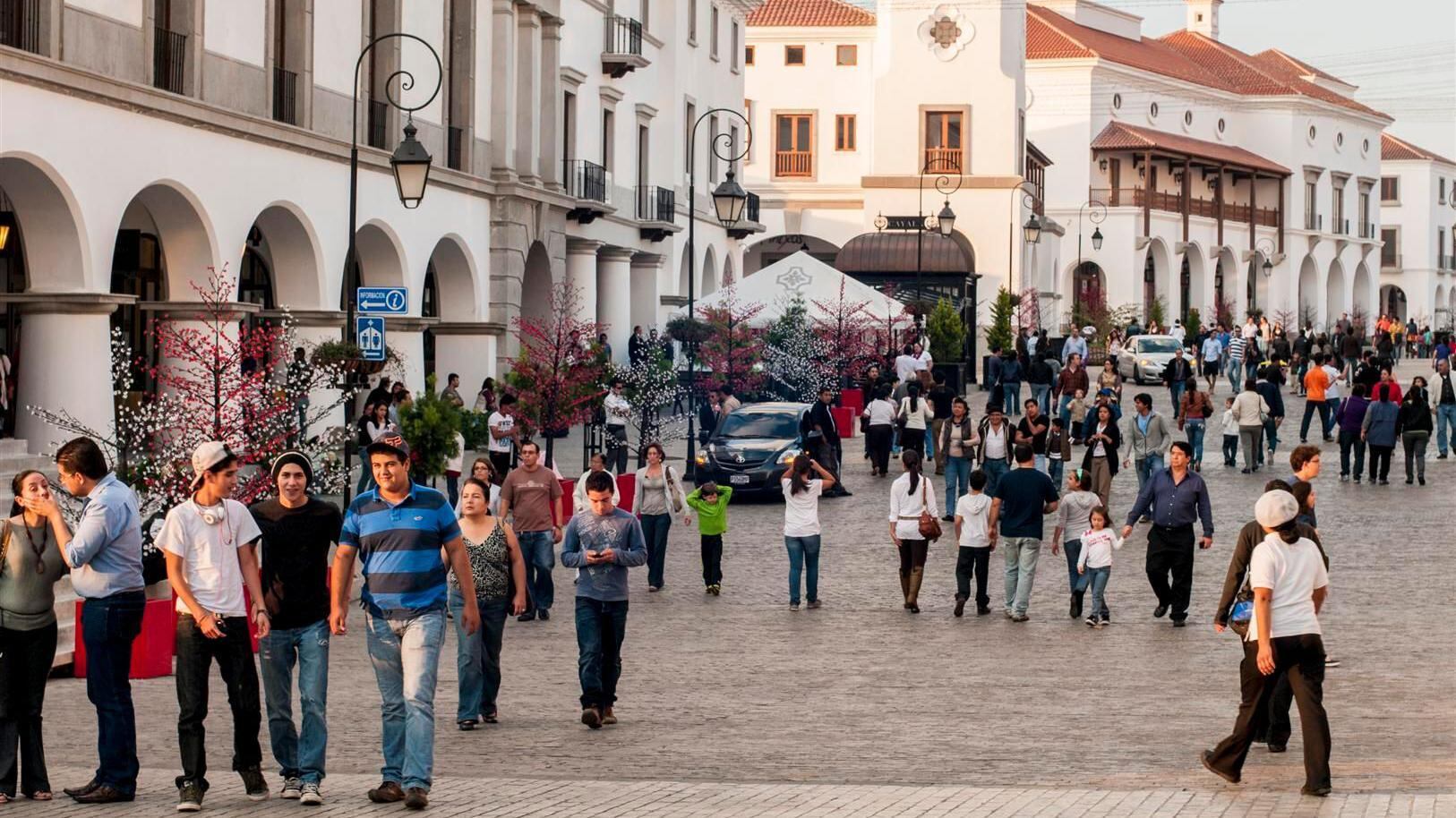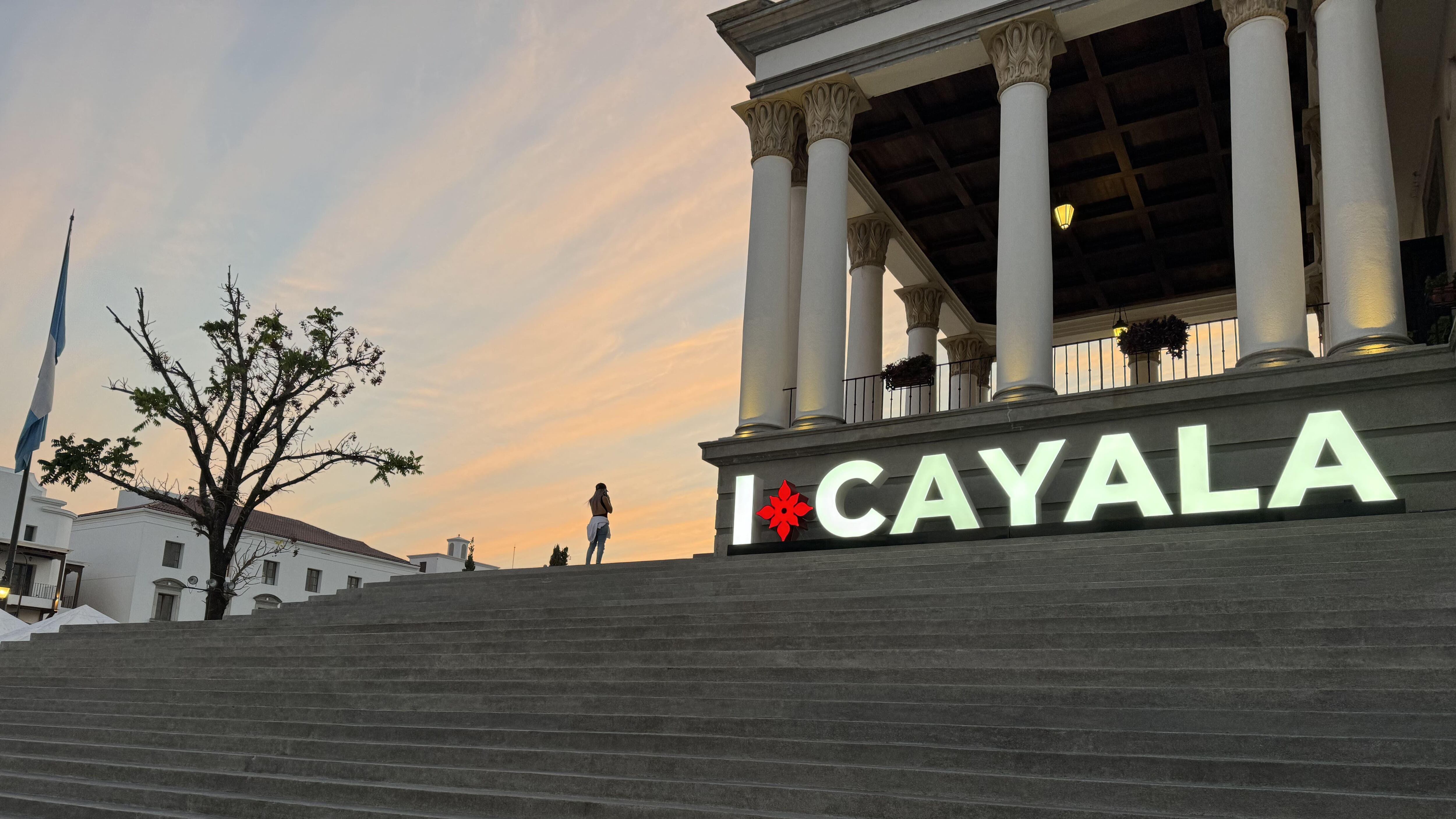The vertigo of Guatemala City disappears in Cayalá.
The quiet streets, white houses and paths adorned with pale pink hydrangeas contrast with the noise of street vending carts and colorful walls elsewhere in the city.
LOOK: The dark influence in Latin America of the North American banana company United Fruit Company and its heir Chiquita Brands
Located east of the Guatemalan capital, Cayalá quickly became the Favorite destination for the country’s richest.
“This place is fantastic”says Isabel, a 70-year-old woman, as she waits for her son at a cafe table in one of the cool galleries with high ceilings reminiscent of colonial times.
Cayalá City is a Urbanization of 21 hectares opened in 2011. It is a private residential project that has open areas and parks accessible to anyone who wants to visit them.
Isabel was born in Ecuador, but has lived in Washington DC, in the United States, for several years. She knows Guatemala City well because she lived there while her husband served as Ecuador’s ambassador to the Central American country.
He has been in Cayalá for a month looking for a house to buy and thus alternate his rest days between his two adopted countries. Also being close to his son, one of the 2,000 residents of this exclusive and controversial residential neighborhood.
“The first time I was in Cayalá I was afraid to sit outside, but then I realized that this is a safe place, everything is close and the people are very attentive,” he says as he gently moves his left hand in which he carries a emerald ring.
For years, the city of Cayalá has been the target of criticism from those who believe that it is nothing more than a sample of the extreme inequality that exists in Guatemalawhere 55% of the population lives below the poverty line and 71% is employed in the informal sector, according to data from the World Bank.
“This is a place that does not represent the majority of the population, but only 5% of it,” Elena Ruiz Bejarano, director of the Guatemala Children’s Rights Observatory, told BBC Mundo.
“In this country, most residential projects respond to the needs of a few and not the majority of the population”, says Ruiz Bejarano.
A “paradise” in the city
Cayalá means “paradise” in Quiche, one of the Mayan languages..
In 1913, the Leal family, one of the most powerful and richest in the country – owner of large areas of land and important private companies – acquired the land.
It took almost a century for construction to begin.
In 2003, the couple of architects from Estudio Urbano, Pedro Pablo Godoy and María Sánchez, presented investors with a proposal for a small “planned city” where everything would be within a 10-minute walk.
The works, which began in 2010, are in stages and have already been built five private neighborhoods.
The particularity of this place is that it has areas open to the public, where visitors can stroll without needing to register or present a license, which has made it the main attraction for visitors to the region and tourists arriving from abroad.
For the project director, this decision was a “audacity”.

“Private security companies recommended that Let’s build a wall and a gate. But that’s not what we did,” Pedro Pablo Godoy told BBC Mundo.
Visitors pass through this neighborhood daily, which has dozens of stores, private clinics, restaurants and even a church. Until The United States decided to establish its embassy in Cayalá.
“What we seek is to create community. For this, the human scale in architecture is a key factor. We wanted everything to be done in a ten-minute walk”, says Godoy.
Marvi, a woman who lives in Santa Amélia, just a few minutes from Cayalá, says that the place has become the center of the east of the capital. “We who live in zone 16 solve everything here,” she says while waiting for her husband to finish shopping.
However, for Ruiz Bejarano, these types of projects that are within the reach of only a few They do not represent a meeting point between people from different socioeconomic backgrounds, but quite the opposite.
“If there is no social coexistence with those who are different from me, there is no way to break these social barriers”, says the director of the Observatory for the Rights of the Child in Guatemala.

And ultimately, the Entry to Cayalá depends on the private administration of the neighborhood.
Last October, a group of protesters demanding recognition of Bernardo Arévalo’s victory in the presidential elections was intercepted by armed guards with their faces covered who prevented them from entering the premises.
“The presence [de seguridad privada] “It responds to the sole purpose of preventing disturbances and damage to private property,” the Cayalá administration said in a statement.
For critics, this residential neighborhood does nothing more than highlight the social inequalities that exist in Guatemala.
“It is a space that seeks to provide security and guarantee rights to a minimum portion of society. Cayalá came to make visible the inequality between the few who can belong to it and those who cannot”, says Ruiz Bejarano.
Others consider that Ciudad de Cayalá is a “White elephant”which has little to do with Guatemala.
Neourbanism
“It is a city that is not realistic in terms of costs for Guatemala. Maintenance costs are very high, as is the cost of electricity. white elephant difficult to keep“, said architect Carlos Mendizábal, from the University of San Carlos, in Guatemala, to BBC Mundo.
Cayalá is a project born of neo-urbanism, The architectural trend, which emerged in the early 1980s and is found in ancient cities of the past, an ideal model for the present.
It seeks to create spaces in which light-colored buildings have no more than five floors and the streets are wide and sunny, with irregular layouts, visual edges and uneven levels.
For some, Cayalá is innovation. For others, it is a place incapable of reflecting Guatemalan architectural roots.
“Guatemala has pre-Hispanic, colonial, modernist architecture, but not an architecture like that reflected in Cayalá“, says Mendizábal.

The master plan for Cayalá was carried out by the Luxembourg urban planner Leon Krierone of the great references of neo-urbanism at an international level, the same person who designed Poundbury, in England, an experimental city commissioned by King Charles III.
More than a decade after its inauguration, the constructions expand across virgin lands looking for new owners.
But one of the design’s basic principles, which limited the height of buildings, which now grow skyward, is being abandoned.
Godoy confirms that the next stages, which involve the construction of three new neighborhoods, include buildings that exceed the five floors of the initial project, but clarifies that They will be located in “strategic points”.
This led to tensions among the architects, especially with Krier himself, who said that the pressure to the city grew and became “unbearable”.
“I believe that building skyscrapers is an immoral act,” said the architect whose ideal is the European city before modernity.
The challenge of maintaining the human scale, which is the very essence of the project, and at the same time expanding the offer to make the real estate business profitable, placed its architects in an uncomfortable situation.
“This new phase goes beyond the limits of the original project. But the principles of neo-urbanism remain”, says Godoy.
The security
The project, in addition to being designed with a clear urban philosophy, is also designed from a safety point of view.
In a country where homicide rates are among the highest in Latin America, Cayalá is presented as a “protected zone”.
The neighborhood is controlled by a strict surveillance system which, at first glance, is imperceptible. But as we spend more hours there, we can begin to detect the threads that hold it together.
The dozens of security guards, the cameras on every corner and the fences that divide the public areas from the residential areas do their job.

“These types of buildings, which are a type of closed colonies, do nothing more than encourage the people who live in them not to want to leave the place”, asks Ruiz Bejarano.
The truth is that in Guatemala it is not just the richest who resort to private security. In many neighborhoods you can see plainclothes men with long weapons protecting even the most humble businesses.
“All historic centers in Latin America are dangerous in certain areas. And Cayalá is no exception. This is also an area that suffers from insecurity”, says Mendizábal.
“It’s not Guatemala”
When Léon Krier is accused of having conceived a “ghetto for rich people”, He defends himself by saying that the proposal to open private spaces to the public is exactly the opposite, an attempt to generate points of contact between different social strata.
“It is a private investment that seeks a high-class client, but anyone can enter. I especially insisted to the promoters that the neighborhood’s doors should be open to everyone, otherwise society would explode,” Krier told Expansión magazine.

Godoy responds to criticism by saying that this urbanization model could be designed for low-income neighborhoods.
“This is not a model that aims to be elitist. It is a model that can be replicated for all types of life. It’s a replicable model for any social class, because we all have the same needs,” he says.
In a society where the richest 1% of the population has the same income as half the population, according to data from Oxfam, the existence of Cayalá can be read more as a symptom than as the origin of the problem.
“There are different Guatemalas for different people“, says Glenda, a Guatemalan publicist who considers Cayalá as authentic as the historic center of Guatemala City.
While tranquility prevails in Cayalá, a few kilometers away, on Paseo de la Sexta – the busiest pedestrian street in the capital – hustle and bustle surrounds everything.
Two different realities, which coexist in the same space and barely touch each other.
Source: Elcomercio
I am Jack Morton and I work in 24 News Recorder. I mostly cover world news and I have also authored 24 news recorder. I find this work highly interesting and it allows me to keep up with current events happening around the world.







